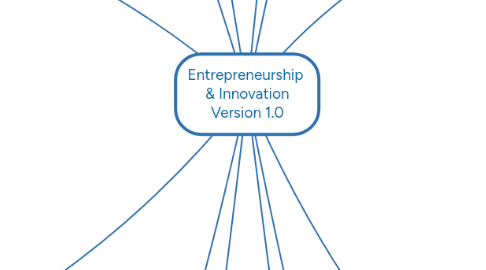
1. 7.Observation and Interviewing
1.1. Quiz nº6
1.2. Lesson Topics
1.2.1. Testing Hypothesis
1.2.2. Conducting Interviews
1.3. Readings
1.3.1. “Lean Customer Development”, Cindy Alvarez, Chapter 5
1.4. Exercises
1.4.1. Problem Interview Script
1.4.2. Solution Interview Script
1.4.3. Conducting Interviews
1.4.4. Hypothesis Learning Cards
2. 8.Low-fidelity prototyping
2.1. Quiz nº7
2.2. Lesson Topics
2.2.1. Low-Fidelity
2.2.1.1. Digital Prototyping
2.2.1.2. Physical Prototyping
2.2.2. Low-Fidelity Prototyping Roadmap
2.2.3. Pirate Metrics Canvas
2.3. Readings
2.4. Exercises
2.4.1. Creating Your Low Fidelity Prototype
2.4.2. Using Facebok and/or Google Ads to Validate Hypothesis
2.4.3. Designing Your Website
3. 9.High-fidelity prototyping
3.1. Quiz nº8
3.2. Lesson Topics
3.2.1. High-Fidelity
3.2.1.1. Digital Prototyping
3.2.1.2. Physical Prototyping
3.2.2. High-Fidelity Prototyping Roadmap
3.3. Readings
3.3.1. “Fast Innovation”, Pau Garcia-Mila at TEDxESADE
3.3.2. “It’s Time to Play Moneyball”, Steve Blank
3.3.3. “The First Mile”, Scott D. Anthony, Chapter 7
3.4. Exercises
3.4.1. Creating Your Website
3.4.2. Generating Traffic to Your Website
3.4.3. Creating Your High Fidelity Prototype
3.4.4. Updating Your Pirate Metrics Canvas
4. 10.Move on, pivot or quit?
4.1. Quiz nº9
4.2. Lesson Topics
4.2.1. Investment Readiness Level
4.2.2. Spin-In, Spin-Out, Hold or Kill
4.2.3. How to decide?
4.2.4. Zombie Projects
4.3. Readings
4.3.1. “The First Mile”, Scott D. Anthony, Chapter 8
4.3.2. “The Taxonomy of the Lean Startup Pivot”, Grasshopper Herder
4.4. Exercises
4.4.1. Did Your Team Reach Problem-Solution Fit?
4.4.2. Did Your Team Reach Product-Market Fit?
5. 11.Implementation
5.1. Quiz nº10
5.2. Lesson Topics
5.2.1. 100 Tasks
5.2.1.1. Setup
5.2.1.2. Launch
5.2.1.3. Scale
5.2.2. Budgeting
5.3. Readings
5.3.1. “The First Mile”, Scott D. Anthony, Chapter 9
5.3.2. “The quick and dirty guide for launching your startup”, Launch Academy
5.4. Exercises
5.4.1. Defining the Implementation Plan
5.4.2. Creating the Presence on Social Media
5.4.3. Defining the Marketing Plan
6. 12.Preparing your final presentation
6.1. Lesson Topics
6.1.1. Seek Chaos
6.1.2. The Importance of Diversity
6.1.3. New Skills
6.1.4. Final Presentation
6.1.5. 10 Lessons
6.2. Readings
6.2.1. “Presentation skills”, Board of Innovation
6.3. Exercises
6.3.1. Mini-Business Plan
6.3.2. Defining the Script for Your Video
6.3.3. Recording Your Video
7. 1.The concept of innovation and entrepreneurship
7.1. Lesson Topics
7.1.1. Introduction
7.1.1.1. Professor
7.1.1.2. Teaching Assistants
7.1.1.3. Objectives, Grades and Books
7.1.2. Is Innovation and option?
7.1.3. The World is Changing
7.1.4. What's the meaning of innovation?
7.2. Readings
7.2.1. “The First Mile”, Scott D. Anthony, Pages 1 to 23
7.2.2. “Why the Lean Startup Changes Everything”, Steve Blank, HBR May 2013
7.3. Exercises
7.3.1. The Innovation Challenge Exercise
7.3.2. Problem Cloud Exercise
7.3.3. Are you an entrepreneur?
7.4. What are Your Expectations?
8. 2.The innovation process
8.1. Quiz nº1
8.2. Lesson Topics
8.2.1. What is the First Mile Problem?
8.2.2. High failure rate
8.2.3. What D-E-F-T means?
8.2.4. The Scientific Method
8.2.5. Lean Startup
8.2.6. What is a Business Idea?
8.3. Readings
8.3.1. “The First Mile”, Scott D. Anthony, Chapter 2
8.3.2. “Ten Types of Innovation”, Larry Keeley
8.4. Exercises
8.4.1. Researching Reasons for Failure
8.4.2. Finding What is Your Personality
8.4.3. Designing Your Persona
8.4.4. Creating Your Avatar
9. 3.Ideation
9.1. Quiz nº2
9.2. Lesson Topics
9.2.1. Ten Types of Innovation
9.2.2. Different Ways for Ideation
9.2.2.1. The Kick Box
9.2.2.2. Open Innovation
9.2.2.3. Ideation Sprints
9.2.3. The Mini Business Plan
9.3. Readings
9.3.1. “The First Mile”, Scott D. Anthony, Chapter 3
9.4. Exercises
9.4.1. Creating Your Team
9.4.2. Selecting Your Team's Idea
9.4.3. Defining the Three Elements of Your Team's Idea?
9.4.4. Naming Your Team's Business Idea
10. 4.Evaluating and choosing ideas
10.1. Quiz nº3
10.2. Lesson Topics
10.2.1. Evaluation Categories
10.2.1.1. Pattern-based
10.2.1.2. Financial Analysis
10.2.1.3. Role-Playing
10.2.2. Reverse Income Statement
10.2.3. 4P's
10.2.4. Value Created
10.2.5. Idea Scoring
10.3. Readings
10.3.1. Business Model Generation”, Alex Osterwalder, Pages 1-72
10.3.2. “The First Mile”, Scott D. Anthony, Chapter 4
10.4. Exercises
10.4.1. Scoring Your Team's Idea
10.4.2. Reverse Income Statement Exercise?
10.4.3. Analyzing the Competition?
10.4.4. 4P's Calculation
11. 5.Evidence-based Innovation
11.1. Quiz nº4
11.2. Lesson Topics
11.2.1. Identifying Key Uncertainties
11.2.2. The First Mile certainty table
11.2.3. What is a Business Model?
11.2.4. Designing a Business Model
11.2.5. Riskiest Hypothesis
11.3. Readings
11.3.1. “The First Mile”, Scott D. Anthony, Chapter 5 and 6
11.3.2. “Writing a good hypothesis”, Jonathan Wylie
11.3.3. “20 ways to test your business ideas”, Board of Innovation
11.4. Exercises
11.4.1. Designing the Business Model
11.4.2. Analyzing the Macro-Context
11.4.3. Estimating the Market Dimension
11.4.4. Defining the Pricing
12. 6.Corporate Innovation and Entrepreneurship
12.1. Quiz nº5
12.2. Lesson Topics
12.2.1. Test-Learn and Adjust
12.2.2. Problem-Solution Fit
12.2.3. Product-Market Fit
12.2.4. The Experiment Cookbook
12.3. Readings
12.3.1. “The First Mile”, Scott D. Anthony, Pages 137-139
12.3.2. “The Innovator's Hypothesis: How Cheap Experiments Are Worth More than Good Ideas”, Michael Schrage, Pages 3-48
12.4. Exercises
12.4.1. Defining Hypothesis
12.4.2. Finding Whish Hypothesis to Validate
12.4.3. Defining how to validate the riskiest hypothesis
12.4.4. Updating the Mini-Business-Plan
